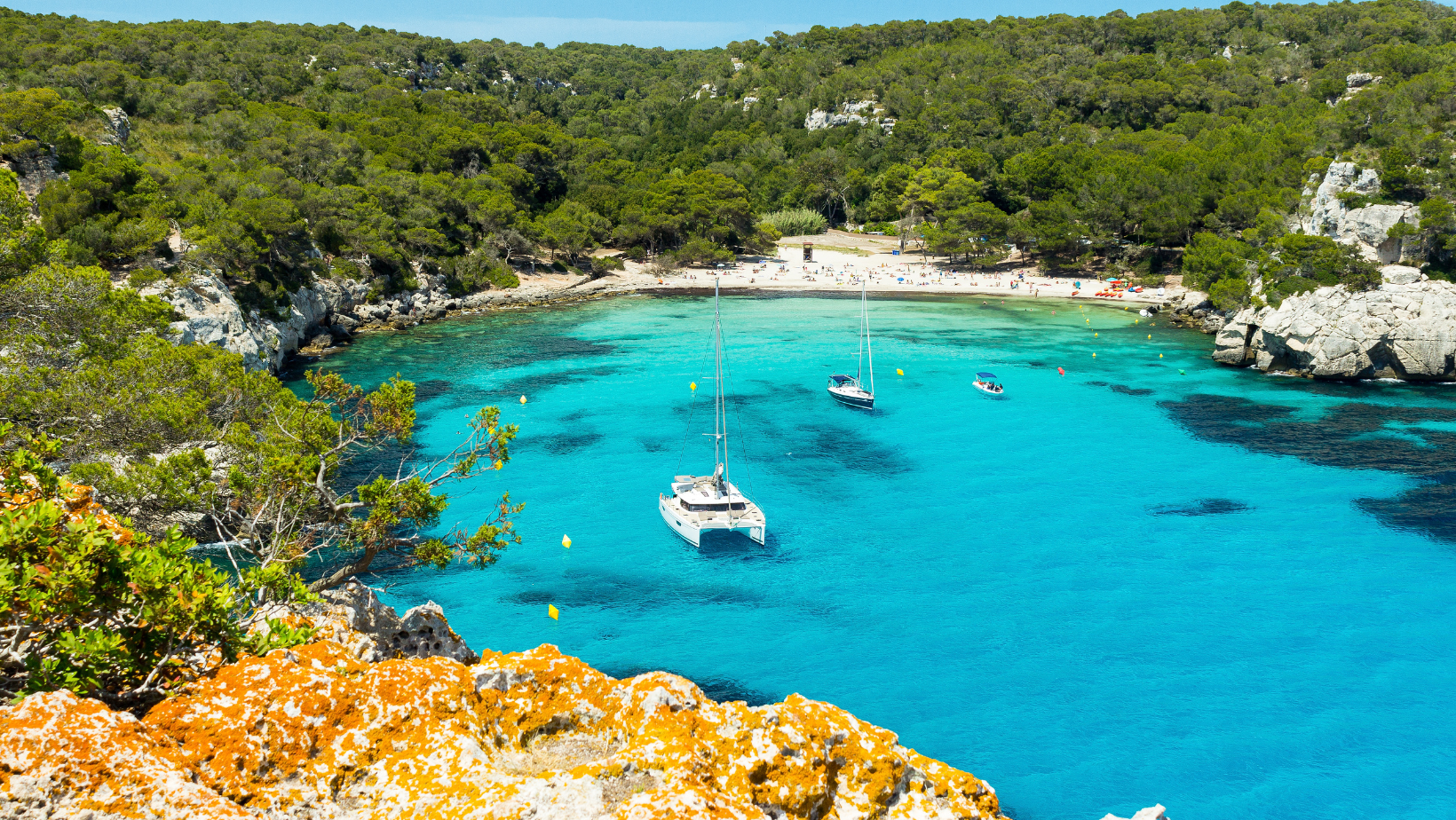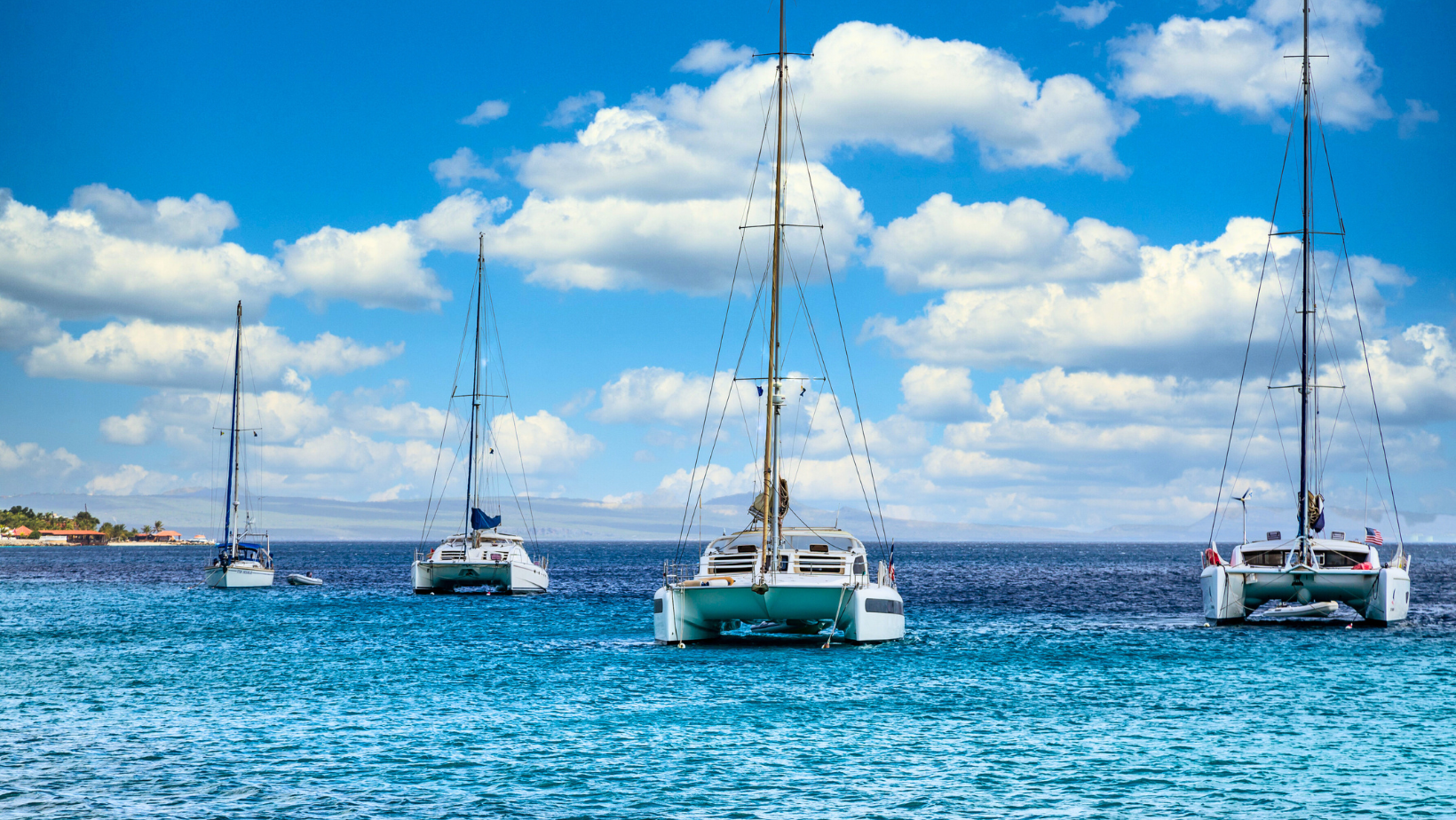Get ready to embark on a sea-faring adventure with us as we unveil the unique charms of catamarans and sailboats—the rockstars of luxury on the water. While we usually dive deep into the world of sailboats, we can't resist sharing the laid-back vibes and the comfort you'll find inside a catamaran.
By zooming in on the differences, we're handing you the ultimate tool to pick out the perfect yacht for your holiday. Ready to set sail? Let's navigate the cozy corners and sail smoothly through the captivating world of catamarans and sailboats. Your ideal yacht escapade is within reach, and understanding these nuances is the compass that will steer you toward the perfect maritime retreat. Cheers to smooth sailing!
.
Yacht Charter: Book your holiday with Sailogy!
.
.

1. Stability:
- Sailboat: Embraces the classic elegance of a single hull, providing a responsive and traditional sailing experience. The tilting motion, counterbalanced by the daggerboard, adds a dynamic element to the journey.
- Catamaran: Boasts unparalleled stability with its two hulls, virtually eliminating the pronounced tilting effect. The absence of deep keels and ballasts enhances agility and lightness, offering a smoother ride. Ideal for those who are prone to experiencing a bit of seasickness!
2. Space:
- Catamaran: Defines spaciousness, providing individual cabins with dedicated bathrooms. The square-shaped dinette mirrors domestic proportions, and the substantial, well-equipped cockpit encourages social gatherings.
- Sailboat: Offers a cozy and intimate setting, utilizing space efficiently. While cabins may be more compact, the sailboat's design fosters a close-knit atmosphere among passengers.
3. Size:
- Catamaran: Impresses with a wide footprint, enhancing onboard living space and comfort. The challenge lies in marina space during peak seasons, offset by the freedom to enjoy extended periods aboard without the need for frequent shore visits.
- Sailboat: Navigates marinas with ease due to its narrower profile. While confined space might limit interior room, the sailboat's ability to find berths becomes advantageous during bustling harbor seasons. It's worth noting that this characteristic can vary depending on the model; for instance, new models such as the Bavaria C38 or the Dufour 44 (premiered in Düsseldorf and soon available) feature generous beams, providing more space, especially in the main front bedroom, and creating a general feeling of larger spaces, even on the deck.
4. All on the Same Level:
- Catamaran: Integrates the dinette and cockpit seamlessly, creating a harmonious, unified space with a transparent sliding wall. Visual continuity fosters a connected and inclusive experience among guests.
- Sailboat: Embraces a more compartmentalized layout, allowing for distinct areas that cater to different activities. This provides passengers with varied environments throughout the vessel.
5. Manoeuvrability:
- Catamaran: Exhibits impressive maneuverability, thanks to two engines that facilitate precise control in tight spaces. The ability to turn within its own axis is particularly advantageous in crowded harbors.
- Sailboat: Requires careful and deliberate maneuvering in harbors due to its single engine. While agility might be reduced, the sailboat's sailing capabilities shine when navigating open waters.
6. Speed and Sailing:
- Catamaran: Hydrodynamically efficient hulls offer superior speed, especially in upwind sailing conditions. The catamaran excels in providing a swift and enjoyable journey, minimizing the impact of adverse weather.
- Sailboat: Demonstrates versatility in sailing conditions, adapting well to upwind challenges. While not as inherently fast as a catamaran, the sailboat's overall speed ensures an engaging sailing experience.
7. Comfort on Board:
- Catamaran: Appeals to first-time sailors seeking a home-like experience. Offers disengaged and domestically oriented spaces, ensuring privacy between hulls—a valuable feature for those with varying daily routines or sailing with a skipper or children.
- Sailboat: Fosters a more communal atmosphere, ideal for passengers who enjoy close interaction. The sailboat's compact layout promotes shared experiences among travelers.
8. Autonomy:
- Catamaran: Slightly compromised autonomy due to weight sensitivity. Limited fuel independence and water reserves necessitate more thoughtful planning. The presence of two engines enhances maneuverability, allowing for precise navigation.
- Sailboat: Excels in fuel autonomy, providing extended sailing periods without the need for frequent refueling. A single-engine simplifies maintenance and promotes straightforward, self-sufficient voyages.
9. Organisation of Space:
- Catamaran: Typically designed with a standardized layout, catamarans for charter often feature two cabins in each hull, strategically positioned at the extreme bow and stern. This layout, with two bathrooms centrally located, offers a consistent and practical accommodation setup. Innovative models feature an exterior galley integrated into the cockpit, providing a unique blend of space and functionality.
- Sailboat: Boasting a more versatile structure, sailboats come in various layouts to cater to diverse preferences. Modern designs challenge traditional constraints with generous beams. This not only enhances interior space, especially in the main front bedroom but also creates a broader and more open atmosphere on the deck. The flexibility in cabin arrangements allows for a personalized and comfortable sailing experience, accommodating different preferences and needs. Ultimately, the organization of space on a sailboat is influenced by the specific model chosen, allowing for a tailored approach to onboard living.
.

.
Catamarans excel in rough seas, thanks to their twin-hull design providing enhanced stability and reduced heeling compared to monohull sailboats. The unique architecture allows for increased speed and maneuverability, making them efficient in navigating challenging conditions.
Key to their rough-sea capabilities is the bridge deck—the space between the hulls—featuring ample clearance in well-designed catamarans. This minimizes slamming, enhances seaworthiness by reducing structural stress, and ensures a smoother ride in turbulent sea states.
While catamarans can capsize in extreme situations, proper design, operation, and the skill of an experienced captain contribute to their overall capability in handling a variety of sea conditions, ensuring a secure and enjoyable sailing experience, even in rough seas.
.
A sailing catamaran and a power catamaran differ primarily in propulsion. A sailing catamaran relies on sails, offering a traditional experience with stability and efficiency. In contrast, a power catamaran uses engines, emphasizing speed and ease of handling. Power catamarans are chosen for faster cruising and covering more miles.
.
Catamarans are often considered faster than monohull sailboats due to their hydrodynamic design. With two hulls providing stability, reduced drag, and a wider beam for efficient sailing angles, catamarans excel in speed. However, sailboats showcase versatility, excelling in certain conditions such as upwind sailing. Overall speed comparison depends on various factors, including design and wind conditions.
.
Sailing a catamaran is often seen as less challenging for beginners due to inherent stability and reduced heeling. The dual-hull design provides balance, making catamarans forgiving in terms of capsizing. While novices appreciate stability, adjustments are needed for maneuvering and handling increased windage. Proficiency comes with practice, and experienced sailors may find catamarans offer a refreshing change in sailing dynamics.
.

.






